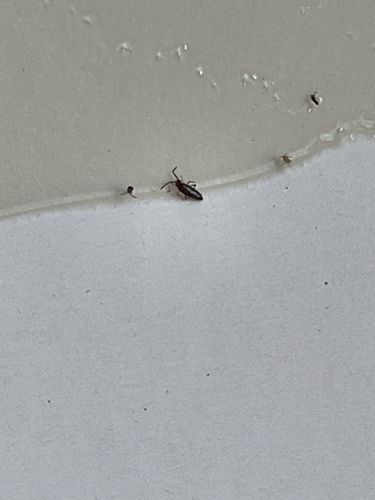Springtail
Scientific Name: Collembola (as a whole, specific scientific names vary greatly by species)
Order & Family: Order Collembola (though sometimes classified as a separate class within Hexapoda due to their distinct morphology); Family can vary greatly as there are many families within Collembola, but common ones include Entomobryidae, Isotomidae, and Sminthuridae.
Size: Most springtails are very small, typically ranging from 0.2 mm to 10 mm in length, with many common species being between 1-3 mm.

Natural Habitat
Springtails are ubiquitous and can be found in almost any moist environment, including soil, leaf litter, decaying wood, compost piles, under bark, in caves, and even on the surface of freshwater and marine environments. Indoors, they are often found in bathrooms, kitchens, basements, or potted plants, particularly where there is high humidity or moisture.
Diet & Feeding
Springtails primarily feed on decaying organic matter, fungi, algae, and bacteria. Some species may also consume pollen or plant roots, but they are generally not considered plant pests.
Behavior Patterns
Springtails are known for their ability to jump using a tail-like appendage called a furcula, located on their abdomen. This furcula is held under tension and, when released, propels the springtail into the air, allowing it to escape predators or unfavorable conditions. They are often found in large numbers in moist environments and can be seen aggregated on surfaces where moisture is present.
Risks & Benefits
Generally, springtails are harmless to humans and pets. They do not bite, sting, or transmit diseases. While their presence indoors can be a nuisance, it usually indicates a moisture problem. Ecologically, they are beneficial decomposers, playing a crucial role in nutrient cycling in soil ecosystems by breaking down organic matter and contributing to soil health. They can also be a food source for other small invertebrates.
Identified on: 8/11/2025